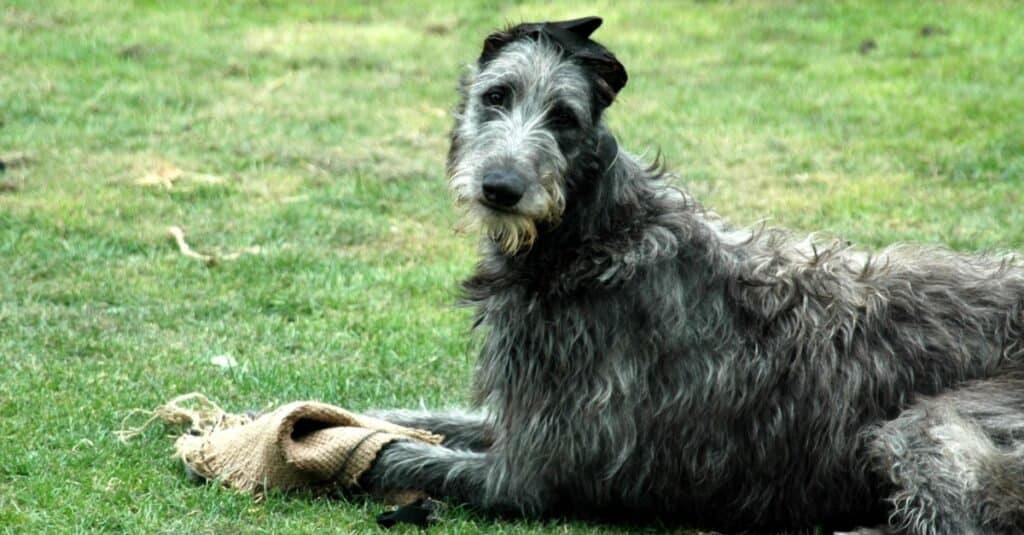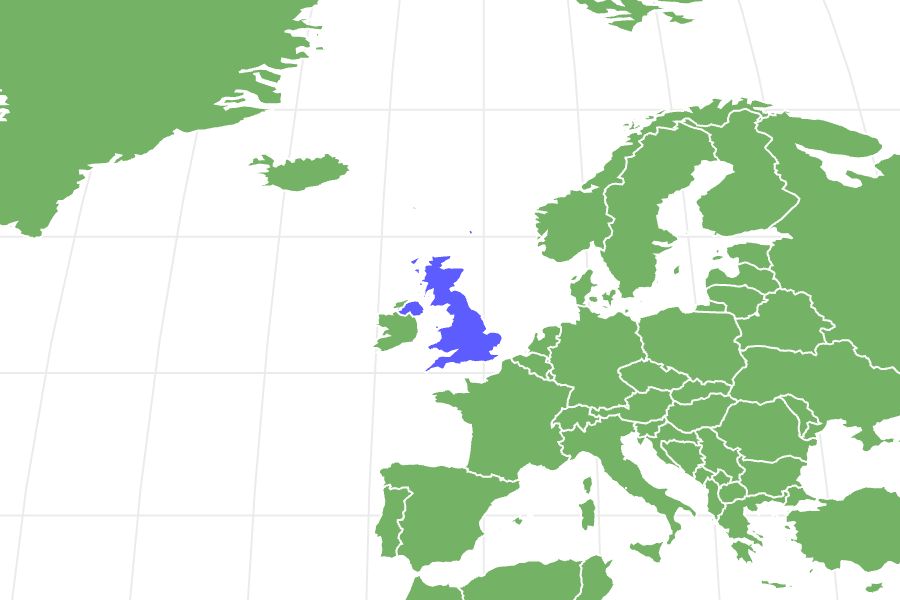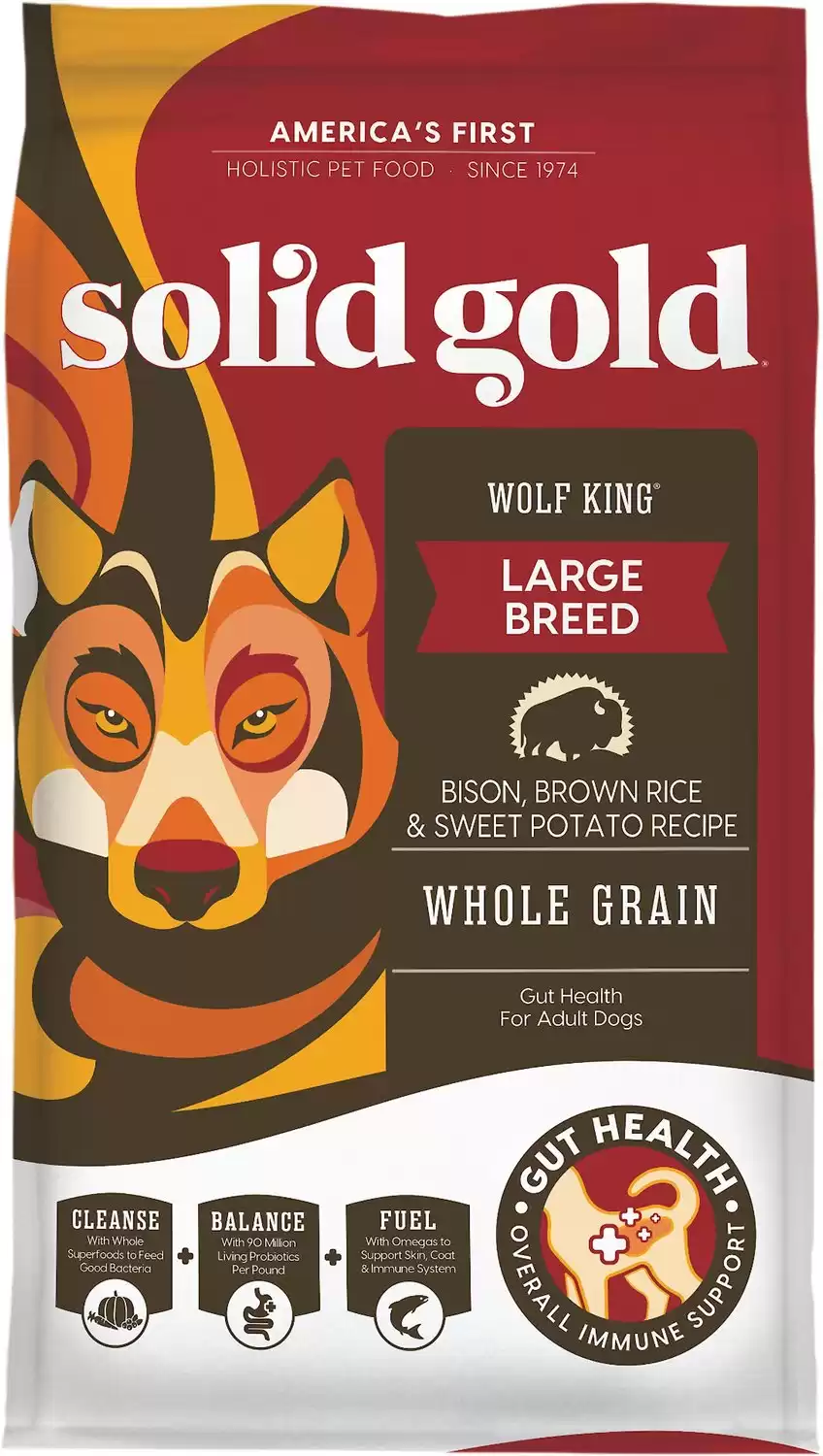Scottish Deerhound
Canis lupus
The Scottish Deerhound was bred to hunt the giant Red Deer.
Advertisement
Scottish Deerhound Scientific Classification
- Kingdom
- Animalia
- Phylum
- Chordata
- Class
- Mammalia
- Order
- Carnivora
- Family
- Canidae
- Genus
- Canis
- Scientific Name
- Canis lupus
Read our Complete Guide to Classification of Animals.
Scottish Deerhound Conservation Status
Scottish Deerhound Facts
- Prey
- Red Deer, wolves, coyotes, wild boar, and kangaroos
- Main Prey
- Red Deer
- Name Of Young
- Puppy
- Group Behavior
- Pack
- Fun Fact
- The Scottish Deerhound was bred to hunt the giant Red Deer.
- Most Distinctive Feature
- Wiry grey coat
- Distinctive Feature
- Speed and size
- Gestation Period
- 63 days
- Temperament
- Composed, gentle, and respectful
- Diet
- Omnivore
- Average Litter Size
- 8
- Lifestyle
- Pack
- Origin
- Scotland, UK
- Location
- Scotland, UK
- Slogan
- "The Royal Dog of Scotland"
- Group
- Hound
This post may contain affiliate links to our partners like Chewy, Amazon, and others. Purchasing through these helps us further the A-Z Animals mission to educate about the world's species.
View all of the Scottish Deerhound images!
“The Scottish deerhound was bred to hunt the giant red deer.”
Introduction
The Scottish deerhound is a giant coursing hound bred in Scotland to hunt the giant red deer. Evidence suggests that deerstalking hounds like the deerhound were in Scotland well before the Scots; Scottish chieftains later refined and revered the breed for its hunting prowess. One of the tallest dog breeds around, the Scottish deerhound’s roots can be traced back to the ancient greyhound.
Known as the “Royal Dog of Scotland,” the Scots so valued the breed that they promoted exclusive breeding, almost causing the breed to die out. Lovers of the breed favor its dark blue-gray coat, though the breed comes in a few other colors.
Though a giant, the deerhound is gentle, friendly, and docile. It is open to strangers and likes children, though its size may intimidate small children. The deerhound is also good with other dogs. It is eager to please its owner and is responsive to positive training. The Scottish deerhound prefers spending time with the family, but it needs lots of space to run. Daily neighborhood walks and playtime in a small backyard are not enough to fulfill its exercise needs.
3 Pros and Cons of Owning Scottish Deerhound
| Pros! | Cons! |
|---|---|
| The Scottish deerhound has a very gentle disposition. It seeks out companionship and is very eager to please. The Deerhound is also friendly with about anything but small animals, which trigger its prey drive. | While the deerhound is gentle and friendly, its size may intimidate children. Additionally, this dog can knock a small child down without even knowing it. |
| The short, wiry coat of the deerhound is very easy to groom. Though it sheds a moderate amount, periodic combing and brushing is the extent of the coat care necessary. | The Scottish deerhound needs to run! Not only does it need to run, but it also needs space to go all out; a small fenced-in yard is not a big enough space. |
| Few people outside of greyhound owners get to know the combination of speed and size that the deerhound exhibits. This dog is fast, with a top speed of about 35 miles per hour. | The deerhound has a heightened prey drive, so it should always be on its lead or in a well-contained space. Though it lives to please its owner, a smaller, quick-running critter may prove irresistible. |
The Best Dog Food for Scottish Deerhound
Clean, fresh water should be available at all times to your deerhound. In order to combat bloating, feed your dog several small meals a day rather than a couple of larger ones. Also, avoid allowing your dog to exercise around mealtime.
The Scottish deerhound has some unique dietary demands. It’s important to add omega fatty acids, glucosamine, and chondroitin for coat and joint health. They need high-quality protein, though the breed can suffer from stress and fatigue if they gain weight too quickly, especially as puppies. In addition, they also mature slowly, not reaching their adult frame until they reach nearly two years. Feeding them concentrated, high-energy food can be harmful.
We at A-Z Animals Recommend Solid Gold Wolf King Bison & Brown Rice Recipe. Keep in mind that the presence of peas in this food may be an issue for dogs prone to dilated cardiomyopathy. Consult with your veterinarian about your dog’s diet and health.
- Designed specifically for larger dogs
- Includes salmon oil, one of the best sources of omega fatty acids
- Includes ocean fish meal which helps improve the DHA and fatty acid content
- Features probiotics, which help improve your dog's digestive health and immune system
Scottish Deerhound Size and Weight
The Scottish deerhound is an enormous dog breed! A male deerhound stands 30-32 inches at the shoulder, and a female stands at least 28 inches. A male weighs about 85-110 pounds, and a female weighs 75-95.
| Height (Male): | 30-32 inches |
| Height (Female): | 28 inches and up |
| Weight (Male): | 85-110 pounds |
| Weight (Female): | 75-95 pounds |
Scottish Deerhound Common Health Issues
The Scottish deerhound has some genetic health issues that can be handled through proper care and foresight. Make sure you go through a responsible breeder who will perform the necessary genetic tests to determine if your dog is susceptible to some of these genetic issues. A key component of your deerhound’s health is its level of exercise and its fulfillment and happiness. The dog’s inclusion in the family’s daily life is a big part of that. To avoid injuries and other issues, only engage the dog in age-appropriate exercise when it is under 18 months. A reputable breeder can be a lifelong resource for health and training knowledge and can instruct you on what exercises are appropriate for your dog.
Below are some potential problems you may want to screen your Scottish deerhound for. Some of these conditions are well managed with early intervention.
Osteosarcoma
This aggressive cancer doesn’t usually affect larger dogs but has been known to develop in the deerhound.
Dilated cardiomyopathy
This is a gradual weakening of the heart muscle for which there is no cure. Make sure the vet check’s your puppy for signs of this condition and yearly thereafter. Exercise intolerance and a cough are also symptoms of this condition. It can be managed, but the vet has to detect it early.
Cystinuria
Typically occurring in males, this type of stone can cause blockages of the bladder, resulting in a urinary tract infection. Always observe your dog to make sure that it doesn’t have trouble urinating, and check for other signs of urinary discomfort. Seek immediate veterinary advice if there are any signs of this problem.
Surgery-related issues
Deerhounds (and other sighthounds) may have disorders which come into play during or after surgery. Bleeding disorders like a factor VII deficiency can cause bleeding problems and inhibit recovery, or even prove to be fatal. Responsible breeders can usually detect these through genetic testing as puppies, but sometimes they miss it. Speak with the veterinarian before any surgery to discuss this possibility. Scottish deerhounds also can have fatal reactions to anesthesia. Finally, deerhounds can also have an allergic reaction to certain drugs and antibiotics due to metabolism issues.
Liver shunt
Sometimes a certain blood vessel in the liver, which should close in puppies, doesn’t close. The breeder should identify this, and surgery can correct it.
Bloat and gastric torsion
Dogs with the deep-chested physique of the deerhound sometimes suffer from this disorder. Multiple small meals a day, a lower fat diet, and avoiding strenuous exercise immediately before and after eating can reduce this tendency. Immediate treatment from a vet is recommended if the dog shows signs of bloat, such as restlessness, vomiting, or a swollen or hard stomach.
Scottish Deerhound Temperament
The Scottish deerhound exhibits a refined personality. Composed, gentle, and respectful, the deerhound is friendly and eager to please. Its playful and affectionate traits make it good around other dogs, its family, and children, though its size can make it a bit intimidating for small kids. It is a gentle giant that likes to play and is calm with strangers. No wonder it is the “Royal Dog of Scotland.”
How To Take Care of Scottish Deerhound
Scottish Deerhound Maintenance and Grooming
The Scottish deerhound’s short, wiry coat needs to be brushed and combed every few weeks. You can bathe the dog occasionally to reduce any odor. Also, trim its nails every few weeks to keep them from splintering or cracking. Inspect the deerhound’s skin, eyes, and ears whenever grooming is done, to head off any problems. Brush the deerhound’s teeth at least two to three times a week.
Scottish Deerhound Training
The Scottish deerhound’s training should begin at a young age to avoid any bad habits which will need to be corrected later. The dog is very sensitive and responds well to positive reinforcement, as well as a generally upbeat tone of voice. Also, they don’t enjoy extended repetition of tasks; once they learn something, they’re ready to move on. The deerhound’s tendency to chase means that it should be handled on a lead or in an enclosed area with a high fence. It doesn’t do well in a kennel or crate and needs companionship, preferably of another deerhound, and exercise.
Scottish Deerhound Exercise
A companion deerhound will help you to exercise this breed properly. With another dog and a large fenced-in area to play, the deerhound can run to its heart’s content. Since they can’t be left crated all day, puppies and dogs need to be able to exercise and run. Older hounds, though they are content to lie on the couch, need to be encouraged to exercise because it’s good for them. They tend to get stir crazy and their fitness needs to be a priority through old age.
Scottish Deerhound Puppies

Introduce your Scottish deerhound puppy to members of the family and friends as soon as you bring him or her home.
©Kim Christensen/Shutterstock.com
As with most dogs, deerhounds should be socialized from a young age. Puppy kindergarten can begin as soon as vaccinations are complete, though lack of shots shouldn’t stop you from introducing your pup to members of the family, friends, other (large) household pets, and children as soon as you bring him or her home. If your pup is being destructive, that may mean that it is not getting enough attention and exercise, though forcing it to run alongside a bike should be avoided until it has reached about 18 months of development. The deerhound actually grows more slowly than many large breed dogs, requiring unique dietary and exercise approaches.
Scottish Deerhound and Children
They do well with children, but their size can lead to some issues with small children; such a massive dog can be intimidating, and a child may be apprehensive about being in the presence of an animal that large. The deerhound should be socialized with children from a young age, and it is best if you do not let the dog play with very small children unattended. The children should also be taught how to interact properly with a dog and read its behavioral cues. However, small children should never be left unattended with a dog, trained or otherwise.
Dogs Similar to Scottish Deerhound
Afghan hound: Despite its fancy appearance, this large member of the hound group is known as a rugged hunter. Its luxurious coat actually protects it from the elements in the mountains of Afghanistan.
Borzoi: Somewhat similar in size and body type to the Scottish deerhound, the Borzoi is an elegant and speedy member of the hound group that also carries itself in a dignified manner. The Borzoi was bred to hunt wolves, which accounts for its other name of Russian wolfhound.
Greyhound: The greyhound is the forbear of the Scottish deerhound. An ancient breed, this dog is the template for many large hounds throughout Europe and Asia and is known for its graceful speed and regal bearing.
Famous Scottish Deerhound
“Dusk” and “Dawn” were two Scottish deerhounds belonging to the author Karen Blixen, otherwise known as Isak Dinesen. They were depicted in the movie Out of Africa.
Popular Names for Scottish Deerhound
- Hunter
- Forest
- Dugald
- Fergus
- Gregor
- Dante
- Morgana
- Fern
- Storm
- Bramble
Up Next:
View all 293 animals that start with SScottish Deerhound FAQs (Frequently Asked Questions)
Is the Scottish deerhound a good pet?
Gentle, docile, and eager to please, the Scottish deerhound would be a loving addition to any family. Its exercise needs and potential health concerns mean it would be best for an experienced dog owner and not as a first dog.
What's the difference between a Scottish deerhound and an Irish Wolfhound?
Though they are related, and there has been overlap due to the deerhound being used to help replenish the wolfhound’s numbers, some differences exist. The Irish wolfhound is larger, though the deerhound has longer legs. The Scottish deerhound is a newer breed, and the deerhound also lives slightly longer. For a deeper discussion, look at this A-Z Animals article comparing the wolfhound with the deerhound.
Is the Scottish deerhound rare?
The Scottish deerhound is rare in the U.K. and the United States.
How much does a Scottish deerhound cost?
Scottish deerhounds can be found for about $1,500 to $2,000.
Are Scottish deerhounds good dogs for children?
Scottish deerhounds are very friendly and good with children. Their size can be rather intimidating, though, and they can inadvertently knock a small child over.
Why is the Scottish deerhound so rare in the U.S.?
The Scottish deerhound is rare in both the U.K. and the U.S. The breakup of Scottish and English estates and the disbandment of their kennels after WWI had a severe impact on their numbers.
Are Scottish deerhounds destructive?
The Scottish deerhound can be destructive when it is bored and needs exercise. If this tendency starts to develop, modify its exercise routine and give it more attention, whether through training or play.
What is the life expectancy of a Scottish deerhound?
The lifespan of a Scottish deerhound is approximately eight to 11 years.
Do Scottish deerhounds need a lot of exercise?
Scottish deerhounds require a lot of running and thrive best in a place where they can run to their heart’s content. Walking in the neighborhood or playing in a small yard is not enough to meet their exercise needs.
Are Scottish deerhounds hard to train?
The Scottish deerhound is eager to please, and it responds best to positive reinforcement. It is prey-driven, however, and it needs to be on a lead or in a well-contained yard or space.
Do Scottish deerhounds require a lot of grooming?
The short coat of the Scottish deerhound requires very little grooming. Bathe it occasionally and use a brush and comb on it every couple of weeks.
Thank you for reading! Have some feedback for us? Contact the AZ Animals editorial team.
Sources
- Dimensions.com, Available here: https://www.dimensions.com/element/scottish-deerhound
- Wikipedia, Available here: https://en.wikipedia.org/wiki/Scottish_Deerhound
- Wikipedia, Available here: https://en.wikipedia.org/wiki/Scottish_Deerhound
- Dog Pregnancy Calendar, Available here: https://dogpregnancycalendar.com/scottish-deerhound-pregnancy-week-by-week-calendar
- AKC, Available here: https://www.akc.org/dog-breeds/scottish-deerhound/
- AKC, Available here: https://www.akc.org/dog-breeds/scottish-deerhound/
- Dog Pregnancy Calendar, Available here: https://dogpregnancycalendar.com/scottish-deerhound-pregnancy-week-by-week-calendar
- Wag Walking, Available here: https://wagwalking.com/name/scottish-deerhound-dog-names
- Wag Walking, Available here: https://wagwalking.com/name/scottish-deerhound-dog-names
- AKC, Available here: https://www.akc.org/dog-breeds/afghan-hound
- AKC, Available here: https://www.akc.org/dog-breeds/afghan-hound
- AKC, Available here: https://www.akc.org/dog-breeds/borzoi/
- AKC, Available here: https://www.akc.org/dog-breeds/borzoi
- Dimensions.com, Available here: https://www.dimensions.com/element/scottish-deerhound
- Dog temperament, Available here: https://dogtemperament.com/scottish-deerhound-temperament


















